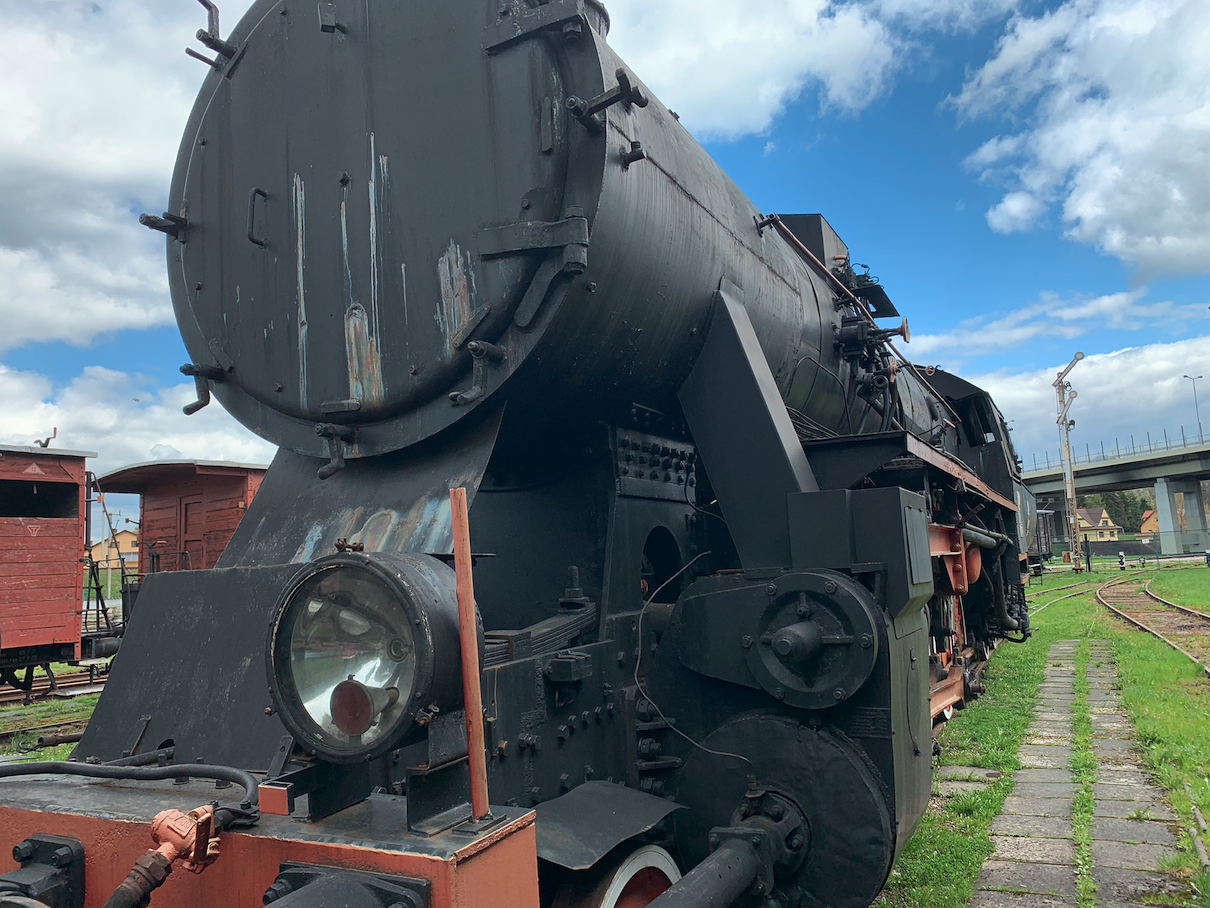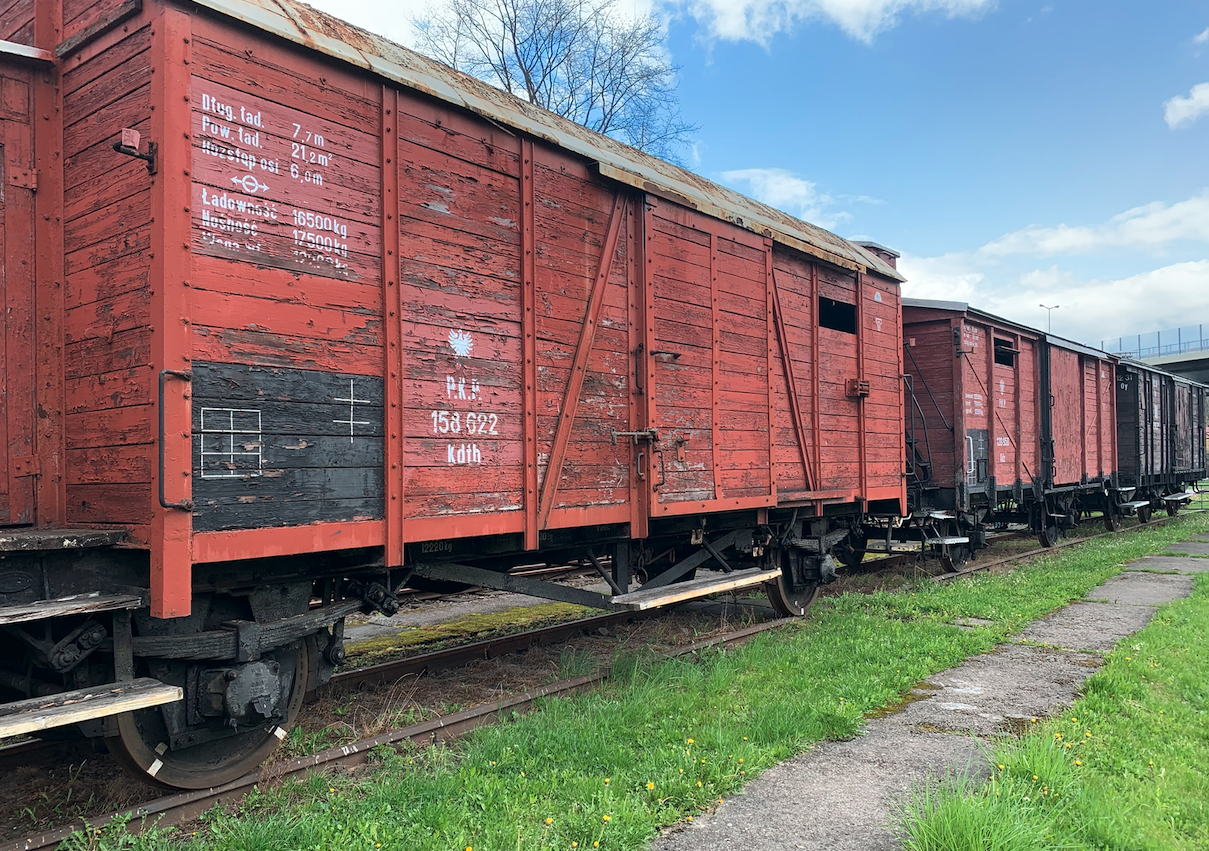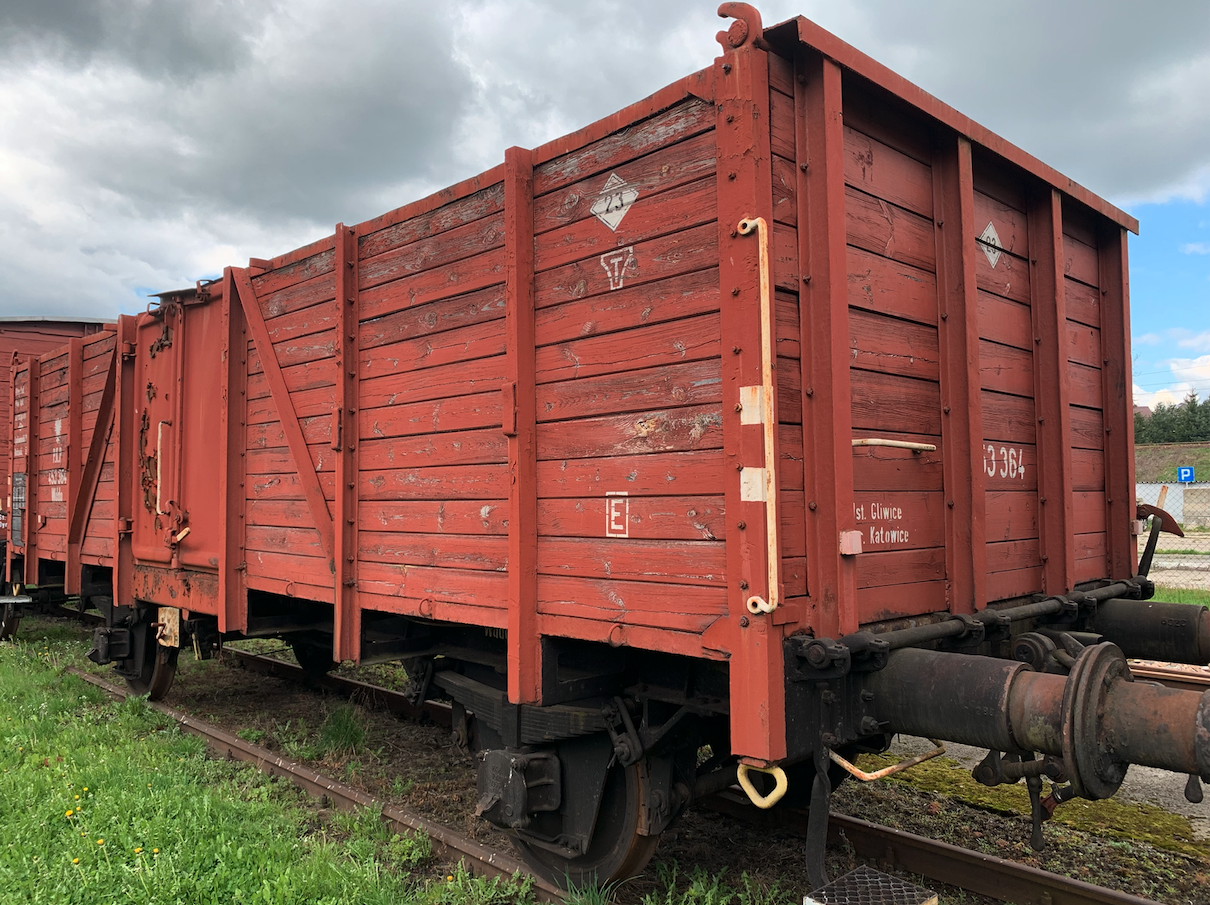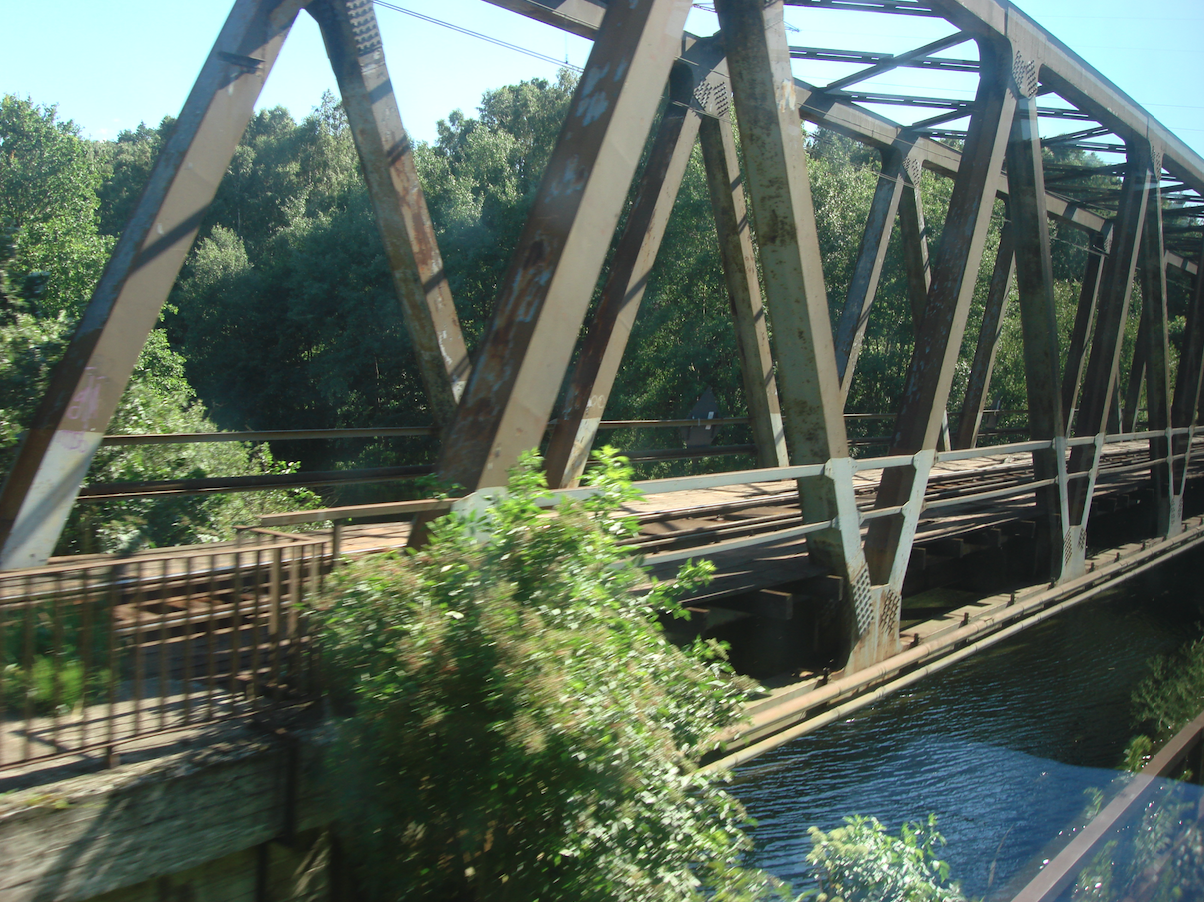Kraków 2022-09-17
Railway in Poland in the period 1939 - 1948.
The railroad is the bloodstream of every country. This was the case in the 19th and 20th centuries.




When, on September 17, 1939, the Soviet army entered the territories of the Eastern Republic of Poland, almost immediately the process of converting the 1435 mm standard track to the 1520 mm wide track was started. Looted Polish locomotives in metal factories were converted into a wide track. The boxes of freight cars were moved to refuges and carts with a wide track.
The Soviets plundered all of Eastern Europe. Already in June 1944, the disassembly and removal of the spoils of war from Romania began. Then came Hungary, Slovakia, the Czech Republic and Finland. But it was a small scale of the plunder in relation to what the mosquitoes did in Poland. On January 8, 1945, the Council of People's Commissars passed Resolution 67-31 on the gains of war. In fact, it was an approval of a functioning practice.
But let us remember that the Germans started the plunder of Poland after September 1, 1939. They robbed systematically and with great knowledge. Burned by the Germans in 1944, the Ossoliński library in Warsaw is a symbol of the fate of all Polish works, stolen or damaged. In many documented cases, what the Germans could not loot or burn was the victim of robbery or confiscation by mosques. The difference was that the Germans enjoyed the works of art, and the Muscovites enjoyed the spirits.
After the military front had passed in January - March 1945, there was another chapter in the plunder of the Polish economy and ordinary citizens. And it was an army that provided provisions itself. With the right of the winner, she broke the areas she had passed through. The value of the looted loot is estimated in the hundreds of millions of US $. Everything of value was plundered: from watches, jewelry, bicycles to works of art, to machines and entire factories. The generous themselves admit to dismantling 1,119 Polish factories. The procedure was carried out by order of Stalin himself. Poles calculated that material goods worth 1.5 billion zlotys (375 million dollars) were transported from the borderlands and central Poland.
As a result of the decisions of the Greats of this world in Tehran, Yalta and Potsdam, the Republic of Poland lost the Eastern Borderlands with Lviv and Vilnius. A total of 178,000 km2. Allegedly, as compensation, Poland received 101,000 km2, the so-called "Recovered Territories"; Warmia and Mazury, Western Pomerania, parts of Greater Poland and Silesia. In addition, a communist government was installed in Warsaw, completely dependent on Moscow.
Soldiers, and especially marauders, looted on an unprecedented scale. Especially the former German lands were plundered because the soldiers were motivated that it was Germanic. Pursuant to the CCCP military law, plunder "for the purposes of warfare" was allowed in the frontier zone, which could reach 100 km deep into the territory already occupied. That is, when the front was in Wałcz, it was possible to plunder, rape and murder in the long "liberated" cities; Bydgoszcz and Toruń. In Toruń, the equipment of the local mills was loaded onto 46 railway carriages, which resulted in a shortage of bread in the city. Georgy Zhukov himself reported to Stalin that his troops had captured all factories in, among others, Łódź, Tomaszów, Radom, Bydgoszcz and other smaller towns. The Soviet marshal was especially pleased with the exported sugar factories and distilleries.
The plunder was organized. The relevant orders were given by Stalin in January 1945, when the Soviet army crossed the Vistula River. On this basis, special "trofiejnyje otriady", that is troops collecting the trophies, were organized. A total of 100,000 people served in the trophic wards. This is not much anyway, because the Soviet army of 9 million people passed through Poland, and in the first post-war years, there were about 3 million mosquitoes in Poland. Everything was transported by rail. The local population was taken for loading. Sea ships were used sporadically.
Until October 1944, in the former Polish Borderlands, there was not a kilometer of normal gauge track. As early as December 1944, preparations were made to forge the tracks on the lands captured after the start of the front in January 1945. The task was that each of the Soviet fronts had two broad-gauge lines for the supply of weapons and the export of trophic goods.
In March 1945, Stalin signed another ordinance regarding plants located in the Polish Karst. It sanctioned what the mosques had already done.
The railroad was dealt with methodically. The east-west railroads were turned into a wide track. The north-south routes were dismantled and taken to the CCCP. It is estimated that about 5,000 - 5,500 kilometers of railway tracks were removed from the "Regained Territories". For comparison, the total length of railway lines in Poland in 2019 was 19,503 km. The history of the robbery of the Lębork - Bytów route is well known, and this is because the Siemirowice (Cewice) airport, located along this route, was initially built for the Soviet army, and only later handed over to the Polish Army. Double-track tracks were also robbed, leaving only one wide track.
On the basis of the agreements (No. 9484) between the puppet government in Lublin and Moscow, of July 8, 1945, the electric railway traction, which has been operating on the Silesian Mountain Railway for 20 years, was dismantled. The complete electric traction network in the Jelenia Góra area was dismantled. Interestingly, the mosquitoes did not manage to dismantle everything in 3 months. Until now (2022), there are German traction poles in the Moscow region.
For the Soviets, Upper Silesia was especially attractive. It did not matter to them whether it was the pre-war Polish or German side. In March 1945, Stalin signed orders to dismantle industrial plants in Upper Silesia. But each Soviet war commander could issue his own orders for the seizure and export of all property. Until August 2, 1945, 214,961 wagons of loot were transported from the "Regained Territories" and the territories of pre-war Poland.
Hard coal was a special commodity. For two months, from April to May 1945, the Soviets removed 975,000 tons of coal from Upper Silesia. In June 1945, 25,000 tons of coal were transported daily from Silesia. Together with the coal, the mine crews were transported to work in the CCCP mining areas. Disassembled Silesian power plants, steel mills, coking plants and rolling mills went east.
Poland was forced by Moscow to reject the Marshall Plan. In addition, Poland was forced to sign an extremely unfavorable contract for the supply of hard coal to the CCCP, for the period 1946 - 1953. The contract was for 50,000,000 tons of coal at a price of US $ 1.22 per ton, or 10% of the market value.
Muscovites attached particular importance to the dismantling of the former German synthetic fuel plants. It was about large plants in Blachownia Śląska, which could ultimately produce 350,000 tons of fuel per year. The Muscovites needed 10,000 wagons to run the factory. Even more wagons (14,000 wagons) were needed to transport the synthetic petrol plants in Police.
In order to transport coal from Silesia, the Muscovites made the rails wide, as far as Gliwice. It is mentioned by the repatriates from the Borderlands, who were loaded into Ruthenian carriages and reached Silesia. Here, the Poles were ordered to reload to PKP (normal-track) trains and continue to the "Regained Territories". Ruthenian wagons were loaded with coal on the way back.
Muscovites proved their bestiality and barbarity at every step. When they entered Gdańsk, they set up cannons at the Wrzeszcz airport and systematically destroyed all church towers. In Świnoujście, they put all the pianos and pianos on the streets, because Stalin ordered that every orphanage in the CCCP should have a piano. The pianos were connected with ropes and the tank was towed to the harbor to be loaded onto the ship. Pianos and pianos mostly lost their legs, so they were thrown into the harbor basin.
The railway network was plundered on a large scale. To the east, not only rails and sleepers, but also switches, railway traffic control devices, and even barriers (barriers) at road and rail crossings were taken. The equipment of the locomotive shed and rolling stock repair shops was removed. Destroyed locomotives were taken to steel mills for smelting and steel transport to the CCCP. The railway network in the area of former East Prussia suffered very heavy losses, where most of the side railway lines were dismantled and transported to the east. Machines were taken from the rolling stock repair plants in Gliwice, Oleśnica, Opole and Katowice. The NKVD also transported from Katowice arrested Polish railroad guards who resisted the looting.
Importantly, the low technical culture of the Mosque meant that most of the machines that reached the East were damaged and destroyed. Machines were torn from foundations with the help of ropes and tanks and dragged along the streets to railway stations. The machines were loaded onto wagons, often uncovered and transported to Moscow for 2-3 months without any cover. Some larger machines that did not fit on one railway platform were cut with burners in two.
Initially, this dismantling was devoid of any legal basis. It was only later that the plunder was sanctioned by intergovernmental agreements between the CCCP authorities and the puppet government of Lublin. The first contract in this matter was concluded on March 26, 1945.
Change of track gauge.
During the Second World War, the so-called shifting of tracks from normal to wide and vice versa was not that difficult. All decks were made of wood. It was only necessary to move one rail by 85 mm (8.5 cm). Ordinary turnouts were also handled without any major problems. It is said that one branch of railway workers (about 10 people) was turning 3-5 km of track a day. He "forged" because the rails were fastened with nails, and rarely with screws.
Currently (2022) it is difficult to determine which railway routes in Poland were transformed into a wide track. In 1945, the wide track from Białystok was definitely transformed. During World War II, a wide track ran from Białystok to the west through Łapy - Śniadowo - Ostrołęka - Grabowo - Wielbark - Niedzica - Działdowo. The railroad track from Wielbark station to the west to the Vistula River took place in February 1945. In Działdowo, one track led to; Iława - Prabuty - Malbork - Tczew, that is beyond the Vistula. The second wide track was leading; Brodnica - Jabłonowo Pomorskie. There was another turnout here. One track to Grudziądz, but here the bridge over the Vistula was destroyed. The second track led to Toruń, where the bridge crossing over the Vistula River was in operation.
A wide track was also made on the Kaliningrad - Braniewo - Elbląg - Malbork route. Wide tracks also entered the territory of today's Poland from the following towns: Mościsko, Rawa Ruska (two routes), Hrubieszów, Dorohusk, Terespol, Sokółka (Kuźnica). The railway line Lviv - Przemyśl - Rzeszów - Tarnów - Kraków - Silesia was rebuilt.
In March and April 1945, important routes were broken in the Pomeranian Lake District; Tczew - Starogard Gdański - Czersk - Chojnice - Człuchów - Szczecinek - Złocieniec - Drawsko Pomorskie - Runowo Pomorskie - Stargard Gdański - Szczecin. And; Chojnice - Złotów - Piła - Krzyż.
Several railway routes have also been transformed in Wielkopolska. There was a fragment of the trail forged between; Sulechów - Czerwiensk on the line from Poznań to Krosno Odrzańskie, because it was the only railway crossing over the Odra River in its lower reaches. The fewest lines have been refuted in Lower Silesia. Let us remember that until the end of World War II, Wrocław was not conquered by the Soviets.
Practically by 1948, the Polish State Railways transformed the wide tracks of 1,520 mm into normal 1,435 mm. There are only a few trails left. In the 1960s, the northern line Braniewo - Chojnice - Szczecinek - Czaplinek - Złocieniec - Drawsko Pomorskie was in operation.
The Sulfur Metallurgical Line, now called the Broad-Gauge Metallurgical Line, is a story from the 70s of the 20th century.
The history of Poland with wide tracks is not over. The problem is that our eastern neighbors Ukraine and Belarus have a broad track. Railway crossings on the Poland-Ukraine border are used. On the other hand, on the border with Belarus, broad tracks in Poland leading from the eastern border have been renovated. In Podlasie there are new wide tracks on the section Sokółka - Kuźnica Białostocka - Geniusze and further to the border. It is line No. 6. Kuźnica Białostocka is a transhipment station from wide to normal tracks. The second wide track was also renovated; Siemianówka station - the dike of the railway line No. 31 through the Siemianówka Reservoir - the border with Belarus. Thanks to these investments, more longer and heavier trains pass through the eastern border. The works were carried out in the period 2019 - 2021. The modernization for carriers means that they can compose heavier and longer trains, even with a length of up to 1 050 m. Until now, trains with a length of up to 650 m have been operated.
On April 15, 1998, the State Duma of the Russian Federation adopted the law "on cultural property transferred to the CCCP as a result of World War II and located on the territory of the Russian Federation". It closed the way to recover the stolen works, because the deputies considered that the goods seized by the "trofiejnyje triady" were a restitution for material losses suffered by Russia during the German occupation. Bandit Russia has never acquired and will never acquire the title of looted property and works of art.
There is no doubt that Poland paid a lot for the alleged liberation from the German occupation. Russia is not a country, it is a state of a sick mind.
Written by Karol Placha Hetman
